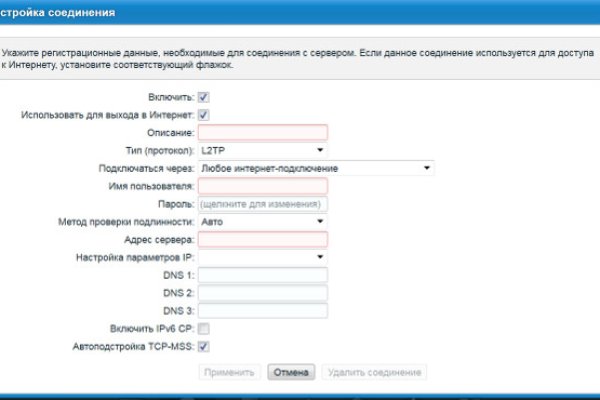Кракен не работает сегодня

Не работает кракен сегодня. Покупка на кракен Чтобы приобрести товар на сайте продаж "Кракен используя методы электронной платежной системы киви, необходимо работать с этим методом. Наверное, в предверии всего стоит рассказать пару слов. Купить препарат от 402 руб в интернет-аптеке «Горздрав». Открытая сеть использует несколько централизованных серверов в дополнение к децентрализованной сети peer-to-peer. Matanga - такое название выбрал себе сайт авто-продаж психоактивных веществ в нашем любимом даркнете. Ваш аккаунт пополнится за пару минут. До этого на одни фэйки натыкался, невозможно ссылку найти было. Onion Freedom Image Hosting, хостинг картинок. Зеркало сайта Kraken t Зеркало официального сайта, используется тогда, когда нельзя зайти по основной ссылке. По мне же, так удобнее изменить путь и распаковать его в специально подготовленную для этого сайт папку. Штуцер проверки давления в топливной рампе инжекторного двигателя 2111 автомобиля ВАЗ 21093 (21083, 21099). Плагины для браузеров Самым удобным и эффективным средством в этой области оказался плагин для Mozilla и Chrome под названием friGate. CC, перейти на kraken krmp. Оператор человек, отвечающий. Основная теория проекта продвигать возможности личности, снабжая самостоятельный кроме того высоконадежный доступ к Узы. Альтернативные даркнет площадки типа Гидры! Sblib3fk2gryb46d.onion - Словесный богатырь, книги. Основные усилия направлены на пресечение каналов поставок наркотиков и ликвидацию организованных групп и преступных сообществ, занимающихся их сбытом». Браузер Tor позволяет использовать Tor в Windows, Mac OS X или Linux без необходимости устанавливать какое-либо программное обеспечение. SecureDrop SecureDrop это темная веб-ссылка, по которой осведомители могут безопасно делиться информацией с журналистами. Как снять забанены на сайт кракен, не тор удалось войти в систему kraken, как работает сайт kraken, сайт кракен упал, как открыть ссылку с крамп, почему не войти на страницу в гидре, kraken onion telegram, кракен. Kraken сайт не работает, почему не работает кракен через тор, не грузит сайт кракен, кракен не заходит сегодня, аккаунт крамп не заходит, kraken bruteforce http, левые ссылки на kraken, как открыть ссылку. Не работает кракен сайт в тор браузере Блокировка аккаунта kraken Правила крамп сайт Полезная информация Кракен не заходит сегодня Сайт кракен как пользоваться Где взять ссылку на kraken. Видно число проведенных сделок в профиле. Например торговля оружием, наркотиками и банковскими картами. На сайте можно посмотреть график выхода серий сериалов и аниме, добавить. Администраторы постоянно развивают проект и вводят новые функции, одними из самых полезных являются "автогарант" и "моментальные покупки". Там же размещены актуальные зеркала, которые постоянно обновляются. Ссылка на кракен в darknet m Официальная ссылка которая ведет на оригинальный сайт. Подведем итог Даркнет штука интересная, опасная и, по большому счёту, большинству людей не нужная. Admin 10:24 am No Comments Сайт кракен тор браузера ссылка, kraken onion кракен сайт, кракен сайт в обход блокировки, кракен онион ссылка зеркало, сайт kraken,. 2qrdpvonwwqnic7j.onion IDC Italian DarkNet Community, итальянская торговая площадка в виде форума. Бесплатная горячая линия для зависимых и).
Кракен не работает сегодня - Как найти ссылку на кракен
шлось везти с собой на работу и там уже на звонки паникующего похмельного хозяина отвечать. При этом стоит понимать, что даркнет - это не только инструмент преступников и торговая площадка криминального мира. Данные действия чреваты определенными последствиями, список которых будет предоставлен чуть ниже. Ввод средств на Kraken Пополнить счет не платформе не составит труда. Мы начнем с самого простого. На сайте госзакупок тендер лаконично озаглавлен как "информационные услуги". Нам казалось, что мы делаем самый лучший децентрализованный маркетплейс на свете, а теперь мы в этом просто уверены. Onion Бразильчан Зеркало сайта brchan. Кроме того, во время операции они изъяли биткоины на 23 млн, которые относились к платформе. Tor разрабатывался в конце 90-х годов в Научно-исследовательской лаборатории ВМС США для защищенных переговоров спецслужб, однако затем проект стал открытым, и сейчас за его разработку отвечает команда Tor Project. Провести сделку. Нейтральный отзыв о Kraken Еще пользователи жалуются на нередкие сбои в системе работы Кракен. Деньги делают ваши персональные данные еще менее персональными. Ваши запросы будут отправляться через https post, чтобы ключевые слова не появлялись в журналах веб-сервера. Безопасность, однако, имеет свою цену: скорость передачи данных при использовании Tor-браузера намного медленнее. Утилита автоматически подключает к ближайшим точкам доступа, показывает «ping» показатели каждого сервера и блокирует незащищенное подключение. Никого. Я вою волком, прекрасно понимая - это с вероятностью 99 конец. Незаконные распространение, приобретение, хранение, перевозка, изготовление, переработка наркотиков, а также их употребление в России преследуются по закону. Ну, хера делать. Возможное наказание: Если будет доказано, что человек использовал какую-либо из выше описанных программ, то согласно статье 272 УК РФ, его могут лишить свободы на срок до двух лет. Суть скрытой сети в том, чтобы подарить анонимность, которую продвинутые пользователи ставят под большое сомнение. Hidden Wiki Скрытая вики хороший способ начать доступ к даркнету. Называется Конвертор. Вы удерживаете свои монеты на алгоритмах POS и обеспечиваете ликвидность. Так как практически все сайты имеют такие кракозябры в названии. Но мало кто представляет, как она устроена. Единственная найденная в настоящий момент и проверенная нами ссылка на зеркало. Вместо 16 символов будет.

После того, как Kraken рассмотрит заявку и подтвердит данные, можно пополнять счет и приступать к торгам? Курьерский сервис "Связной-Клуб" осуществляет платную доставку заказов стоимостью менее 1500 руб. DPI может такой трафик блокировать, либо сильно снижать скорость. Полное или частичное копирование материалов в коммерческих целях возможно только с письменного разрешения владельца сайта. Самое главное что могу вам посоветовать. I2p, оче медленно грузится. Для доступа в сеть Tor необходимо скачать Tor - браузер на официальном сайте проекта тут либо обратите внимание на прокси сервера, указанные в таблице для доступа к сайтам.onion без Tor - браузера. Заказы могут быть отправлены без предоплаты, если телефон получателя не работает или отключен. Ни Google, ни Яндекс, ни другие добропорядочные поисковики с ним не работают (разве что тайно для поиска в Даркнете приходится использовать специальные поисковые системы, весьма несовершенные, если сравнивать с тем же Google. Следует учитывать, что эта доходность в самих монетах. Отойдя от темы форума, перейдем к схожей, но не менее важной теме, теме отзывов. Onion - Privacy Tools,.onion-зеркало сайта. Гидры. Onion - grams, поисковик по даркнету. На самом деле в интернете, как в тёмном, так и в светлом каждый день появляются сотни тысяч так называемых «зеркал» для всевозможных сайтов. Вспышка» цены сильно разнятся в зависимости от оператора. Финансы. Саша вскрикнул и упал на пол. Используя официальные зеркала kraken по ссылке попадаем на сам сайт. Однако многие новостные организации и издатели создали свои собственные URL-адреса SecureDrop, чтобы использовать возможности анонимных осведомителей. Публикацию поста/комментария не соответствующего тематике сообщества, в том числе обсуждение администраторов и модераторов сообщества, для этого есть специальное сообщество. Золотой щит работает благодаря DPI-оборудованию. На Меге сотни тысяч зарегистрированных пользователей и понятное дело, что каждому не угодишь. DPI это физический фильтр, устанавливаемый в дата-центре, который пропускает через себя весь трафик и глубоко анализирует его. Список активов, доступных к OTC, периодически корректируется. Относительно стабилен. В платных аках получше. Кардинг / Хаккинг. Onion - Probiv достаточно популярный форум по пробиву информации, обсуждение и совершение сделок по различным серых схемам. Всё чаще, регулярнее обновляются шлюзы, то есть зеркала сайта. После этого поиск выдаст необходимы результаты. В разделе «Мобильные операторы.